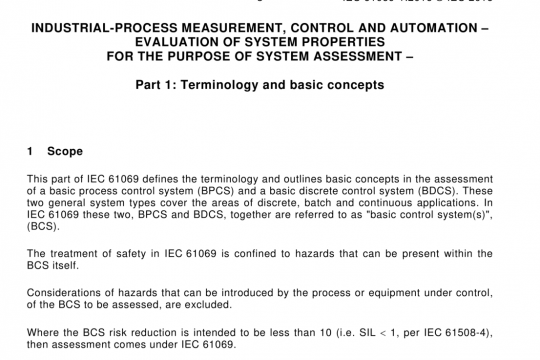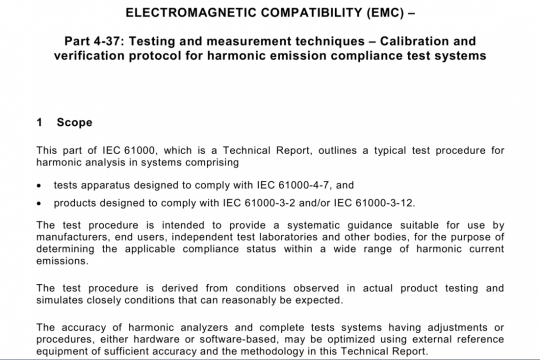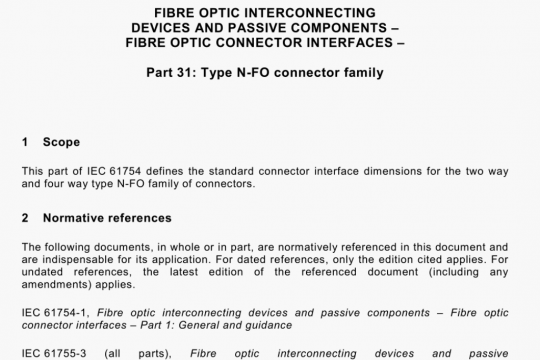IEC TS 63105 pdf free download
IEC TS 63105 pdf free download.Lighting systems and related equipment – Vocabulary.
3.2 Lighting systems 3.2.1 system set of interrelated items that collectively fulfil a requirement Note 1 to entry: A system is considered to have a defined real or abstract boundary. Note 2 to entry: External resources (from outside the system boundary) can be required for the systems to operate. Note 3 to entry: A system structure can be hierarchical, e. g. system, subsystem, component, etc. Note 4 to entry: Conditions of use and maintenance can be expressed or implied within the requirement. [SOURCE: IEC 60050-192:2015, 192-01-03, modified — The verbal forms “may” and “should” in the notes have been replaced with “can”. The domain of application has been removed.] 3.2.2 lighting system system (1EV 192-01-03) designed to provide lighting (1EV 845-29-001) Note 1 to entry: A lighting system can be dedicated to a) the support of one or more specified visual tasks under specified conditions considering other requirements such as human comfort, safety, the appearance of the surrounding environment and energy consumption; b) the support of other than human tasks. Note 2 to entry: A lighting system can include a set of light sources, other physical components, communication protocols, user interfaces, software and networks to provide central control and monitoring functions. Note 3 to entry: The light source(s) and the related equipment can be integrated in a single item, e.g. an LED module, a lamp or a luminaire. Note 4 to entry: A lighting system can be networked to provide central or remote control and monitoring functions. Note 5 to entry: A lighting system can be connected to or integrated with other systems or devices. [SOURCE: IEC 60050-845:2020, 845-27-010] 3.2.3 adaptive lighting system lighting system designed for adaptive lighting 3.2.4 integrative lighting system lighting system designed for integrative lighting 3.2.5 lighting system network interconnection (wired or wireless) between lighting system devices used for internal or external communication Note 1 to entry: A lighting system network can carry digital data as well as analogue signals. 3.2.6 energy performance <of a lighting system> calculated or measured amount of weighted net energy actually used or estimated to meet different needs associated with a standardized operation of a lighting system (IEV 845-27-010) [SOURCE: IEC 60050-845:2020, 845-27-121]3.2.7 lighting quality degree of excellence to which the totality of lighting characteristics fulfils user needs and expectations or other applicable requirements Note 1 to entry: The degree of excellence is not a quantitative measure but depends on the application area and covers individual end-user well-being, safety and public security, architecture and lit environment. [SOURCE: IEC 60050-845:2020, 845-29-029] 3.2.8 networked device <of a lighting system> device capable of communication with or within a lighting system 3.2.9 sensor electric sensor device which, when excited by a physical phenomenon, produces an electric signal characterizing the physical phenomenon [SOURCE: IEC 60050-151:2001, 151-13-48] 3.2.10 compatibility ability of a system or system components to have coexistence, interoperability, and/or interchangeability with other systems or systems components, depending on the context Note 1 to entry: Because the terms “compatible” and “compatibility” are ambiguous, their use is not recommended when other terms are more specific. See definitions of coexistence (3.2.11), interoperability (3.2.12), and interchangeability (3.2.13) to determine which are most appropriate. 3.2.11 coexistence ability of systems or system components to operate together without having harmful or undesirable effects on each other 3.2.12 interoperability ability of systems or systems components to transmit, receive, interpret, and/or react to data and/or power and function in a specified manner 3.2.13 interchangeability ability of a system component to replace the form and fit of another system component and perform in an equivalent way 3.2.14 physical interchangeability ability of a system component to replace the form and fit of another system component Note 1 to entry: System components need not be physically interchangeable.IEC TS 63105 pdf download.




